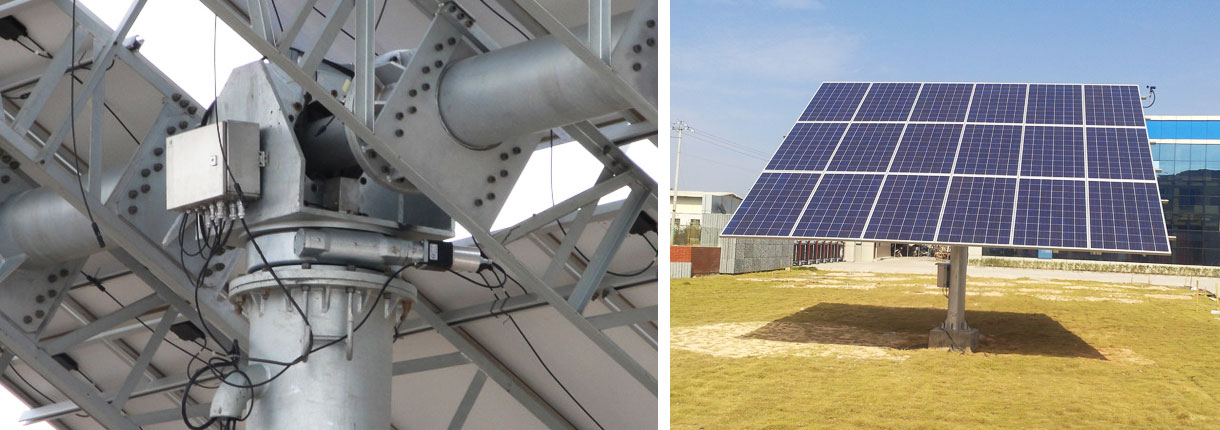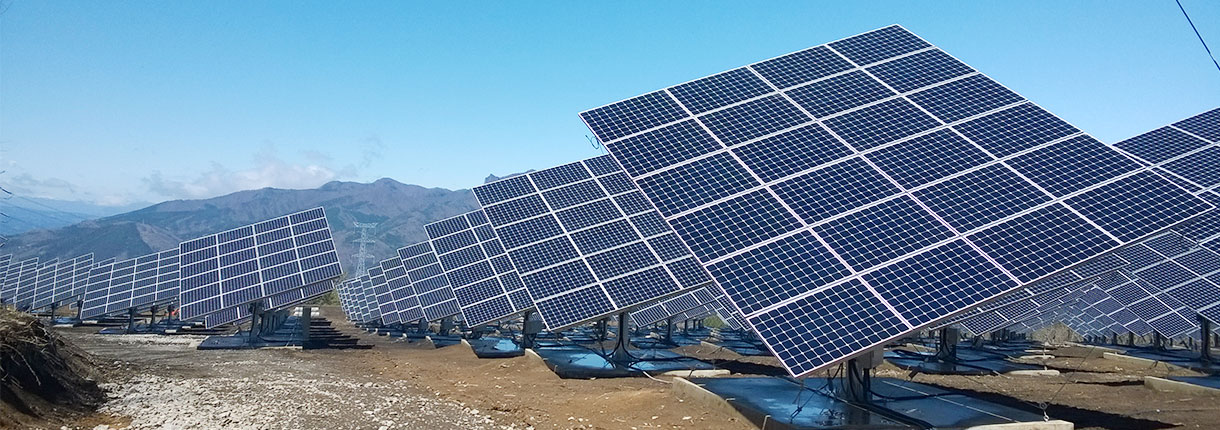Installation method: dual axis-tracking type
Material quality: hot-dip galvanized / zinc-aluminum-magnesium / weathering steel Place of
Origin: Tianjin·Jinghai
Dual-axis tracking, as the name implies, refers to a rotation axis with two directions. In this way, the solar panel can track the sun at the azimuth angle and the altitude angle of the sun at the same time. So as to achieve the solar panels remain perpendicular to the sun's rays. The dual-axis tracking photovoltaic array moves along two rotation axes, which can simultaneously track the changes in the azimuth and altitude of the sun. In theory, it can completely track the sun's trajectory to achieve zero incidence angle.
The dual-axis automatic tracking system is generally divided into two parts: electric control and mechanical.

Electric control system
The dual-axis tracking photovoltaic array moves along two rotation axes, which can simultaneously track the changes in the azimuth and altitude of the sun. In theory, it can completely track the sun's trajectory to achieve zero incidence angle. Generally, tracking control can adopt two basic methods: continuous tracking and step tracking. The continuous tracking mode requires the tracking angle to be adjusted at any time according to the changing law to follow the sun's trajectory. The step tracking method is to adjust the tracking angle at regular intervals so that the photovoltaic array is aligned with the current position of the sun, while the photovoltaic array remains stationary during the rest of the time. Obviously, the step tracking mode simplifies system control. However, the step-tracking photovoltaic array cannot track the sun's trajectory in real time, which will inevitably reduce the utilization rate of solar radiation. Considering all aspects, the step tracking method is adopted to make the tracking angle error less than ±0.5 degrees.
Mechanical structure
he structure of the dual-axis tracking system is divided into a supporting part, a connecting part and a transmission part. The supporting part of the dual-axis tracking system is composed of main pillars, rotating supports and steel structure brackets, the connecting part is composed of aluminum profiles and bolts, and the transmission part is composed of worm gears, connecting rods, and reducers. The tracking direction of the dual-axis tracking system includes two directions of horizontal rotation and vertical pitch, realizing dual-degree-of-freedom tracking. The power input of the motor is decelerated by the reducer, and the worm gear is input to convert the rotation of the vertical plane into the rotation of the horizontal plane. At the same time, the position sensor collects the angle of the system rotation in real time, and inputs real-time data for the electronic control to realize the horizontal rotation direction. Automatic tracking

